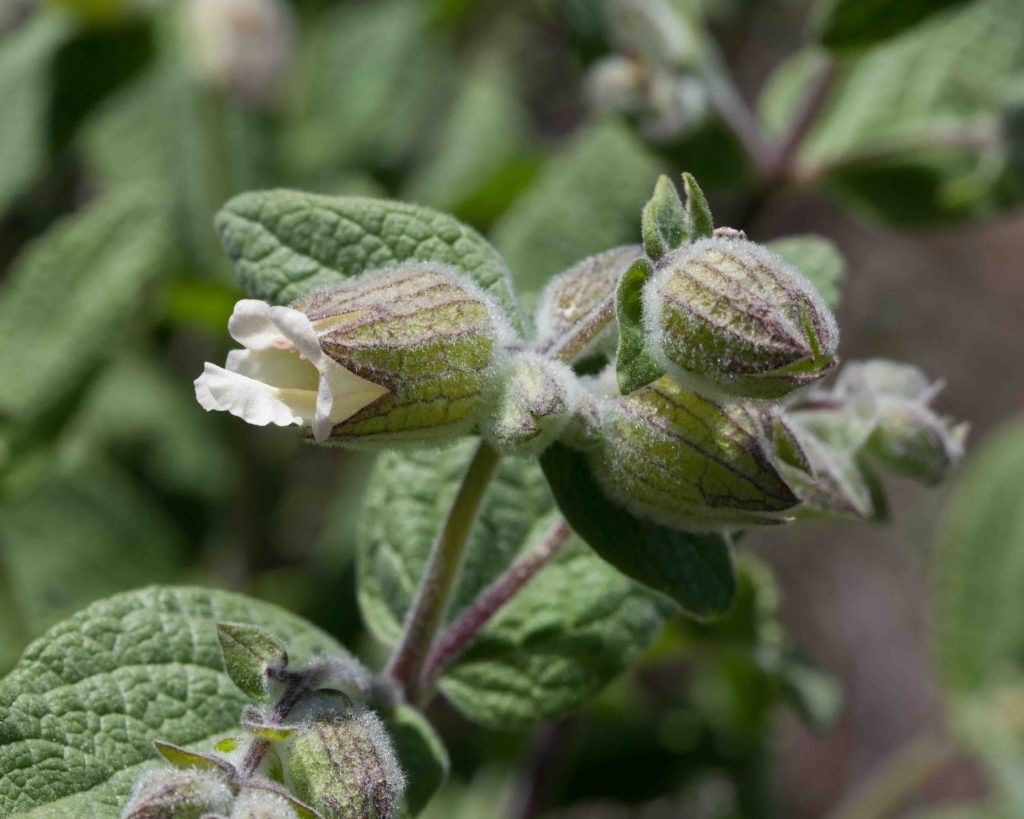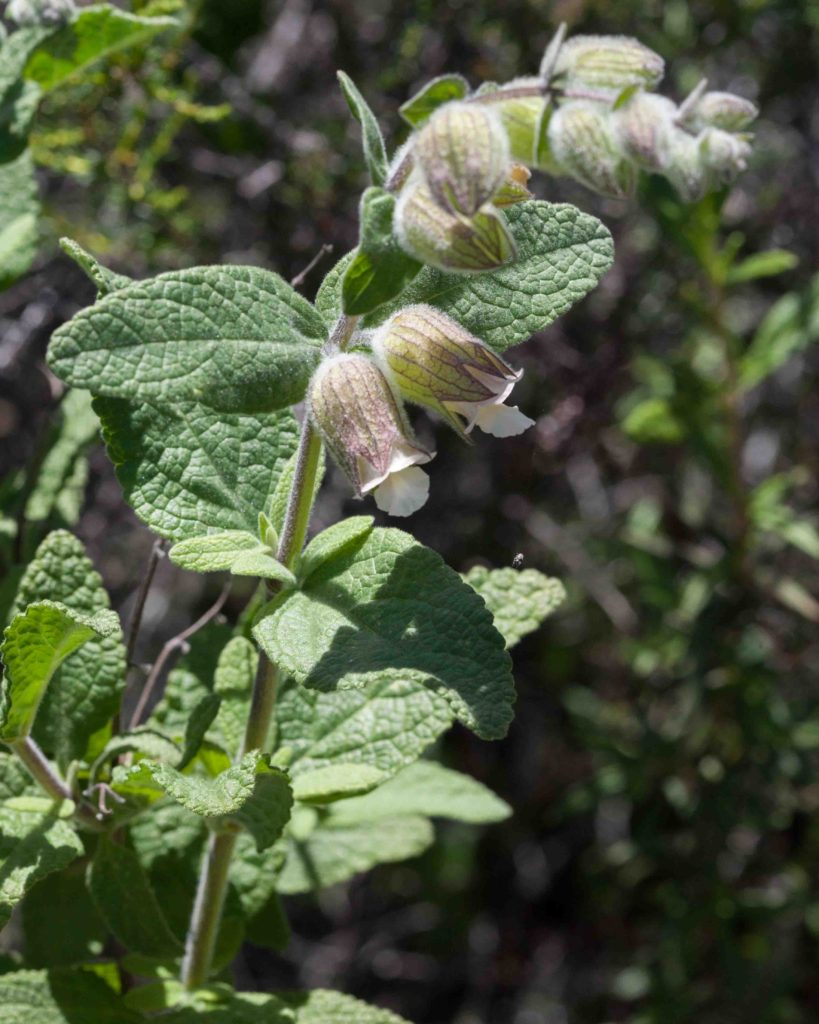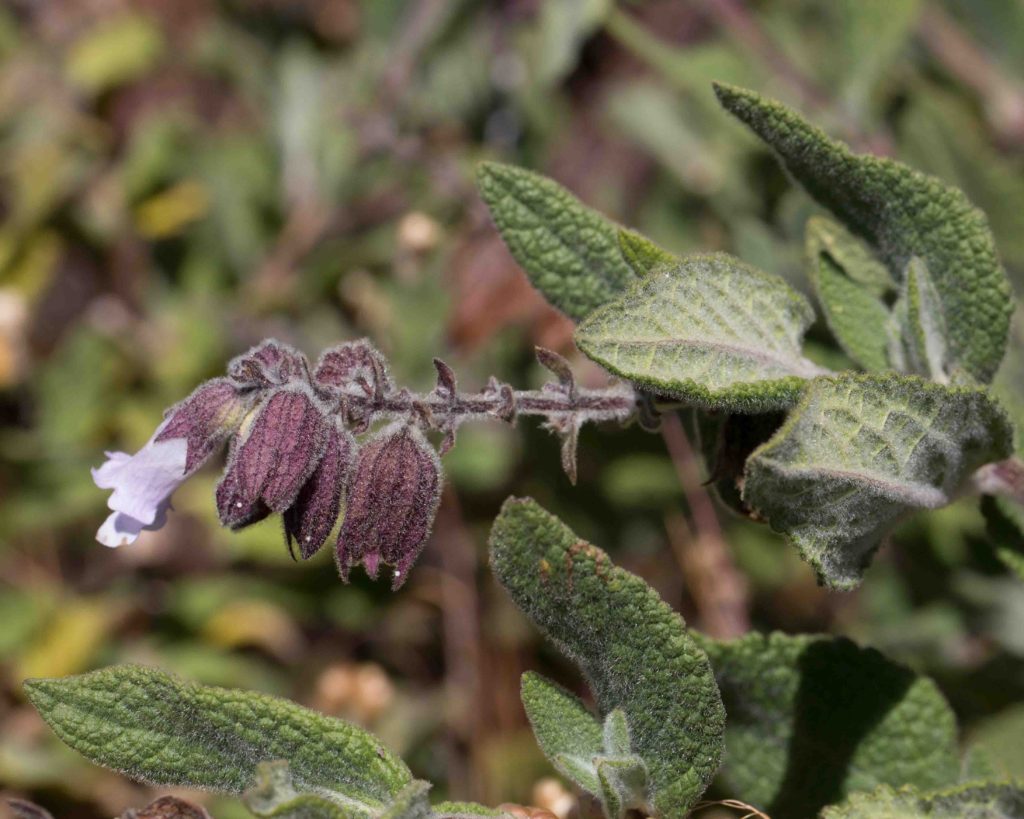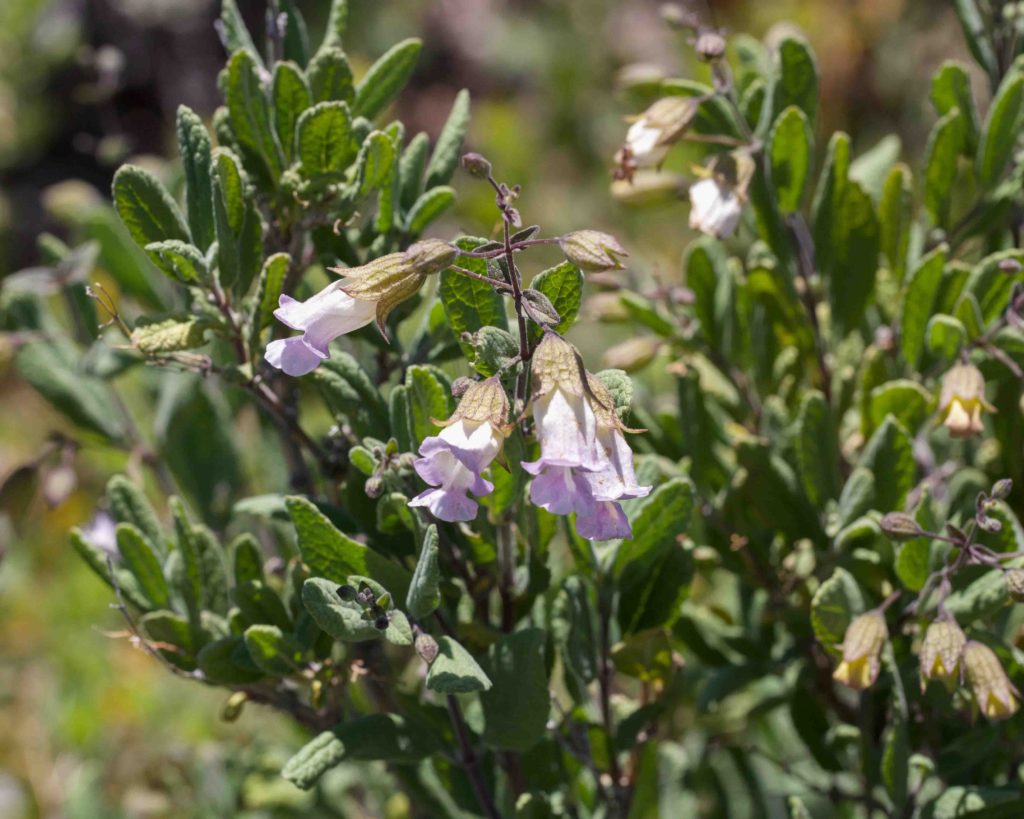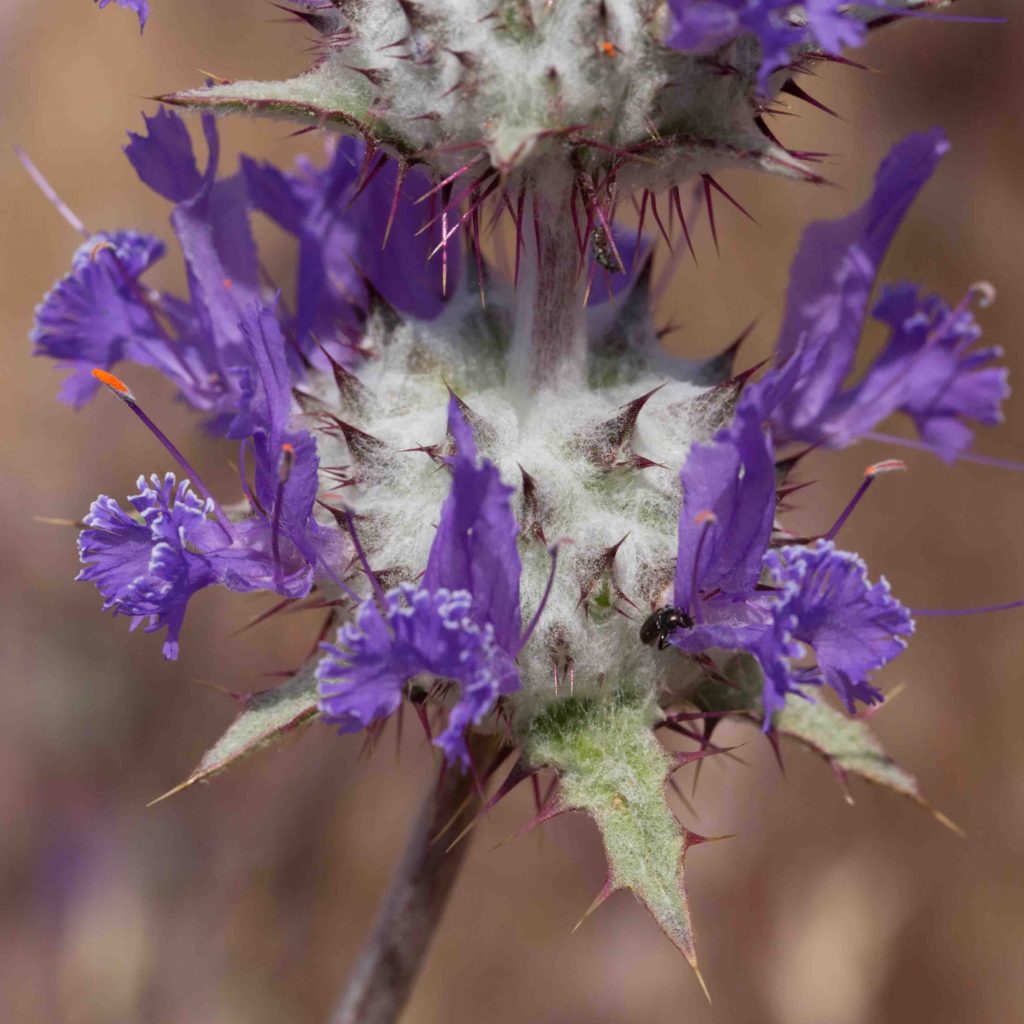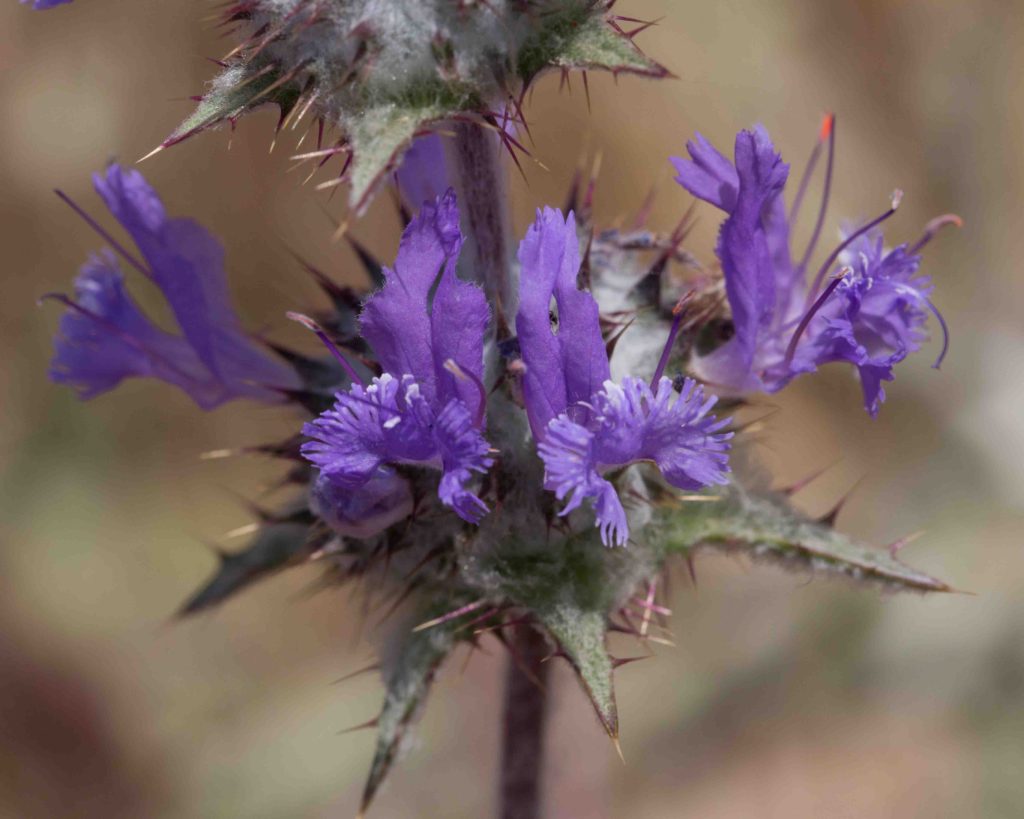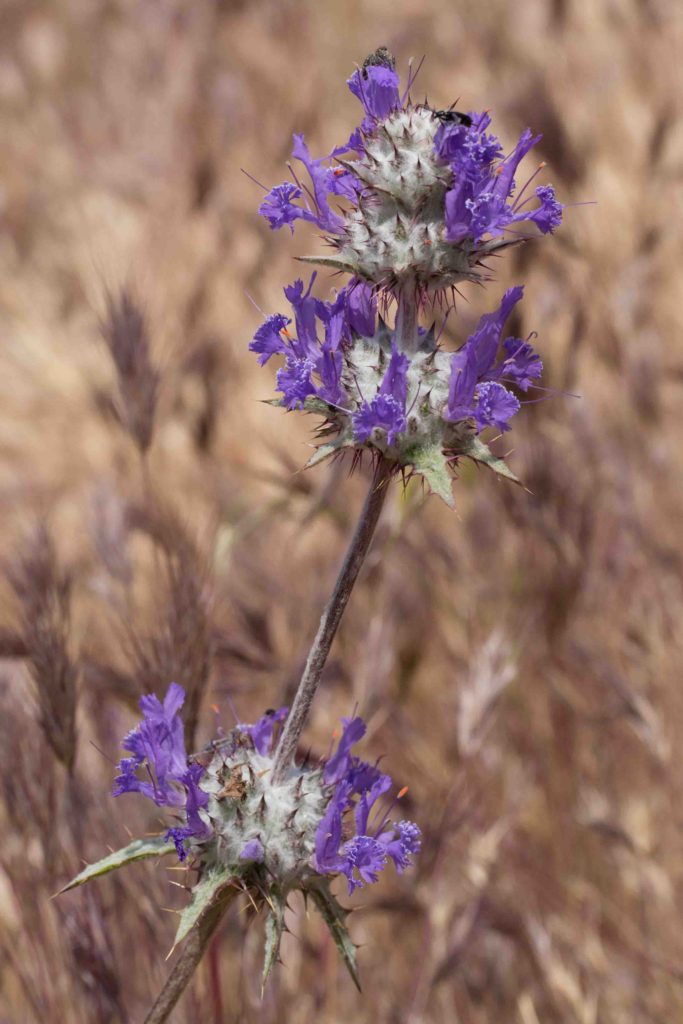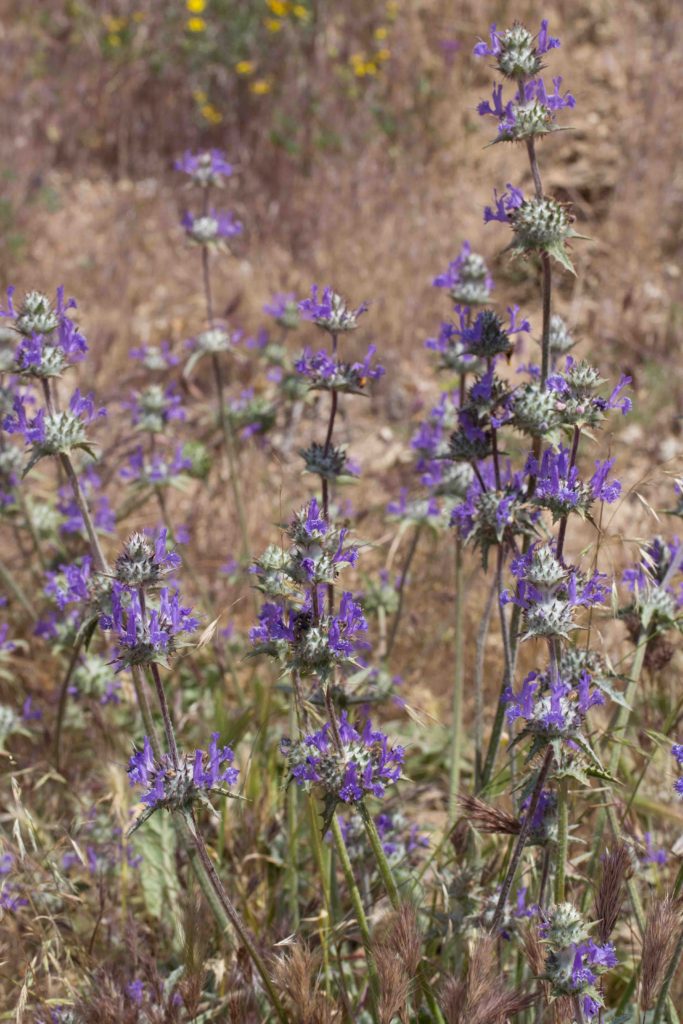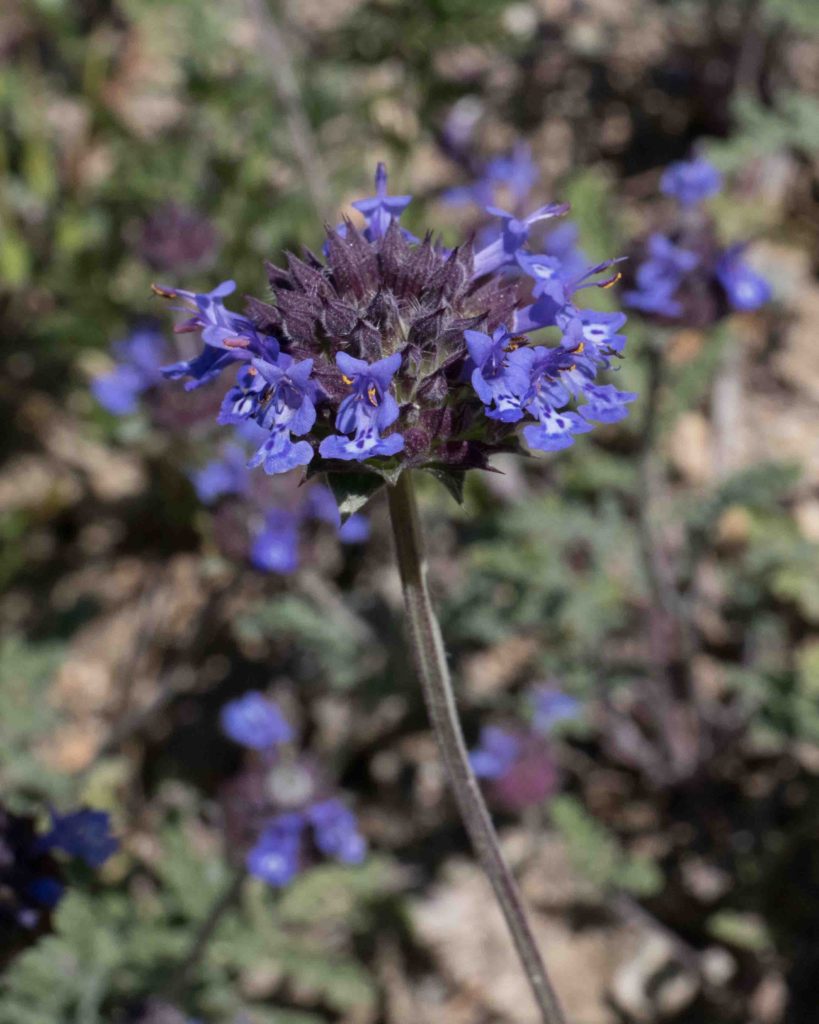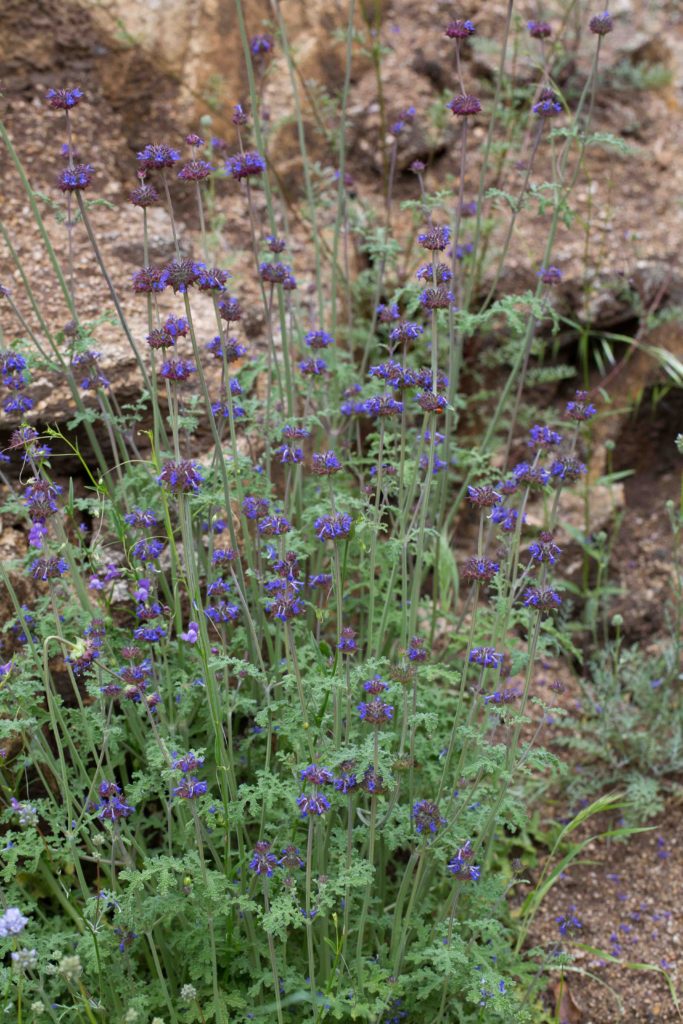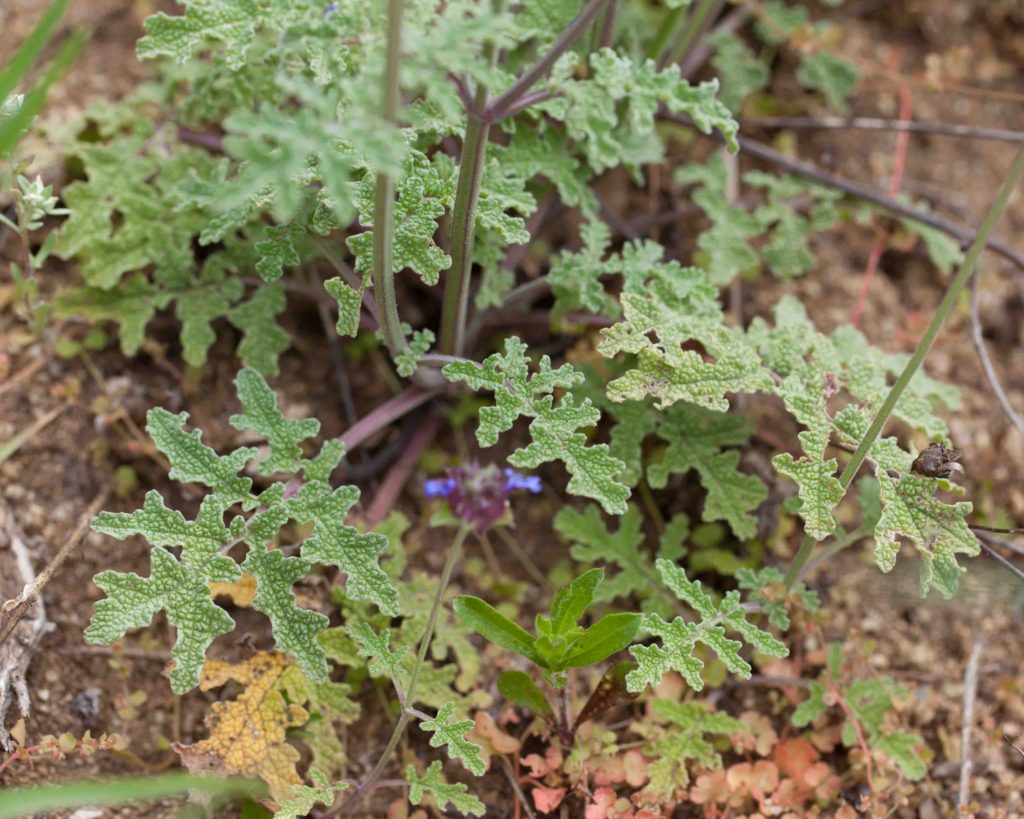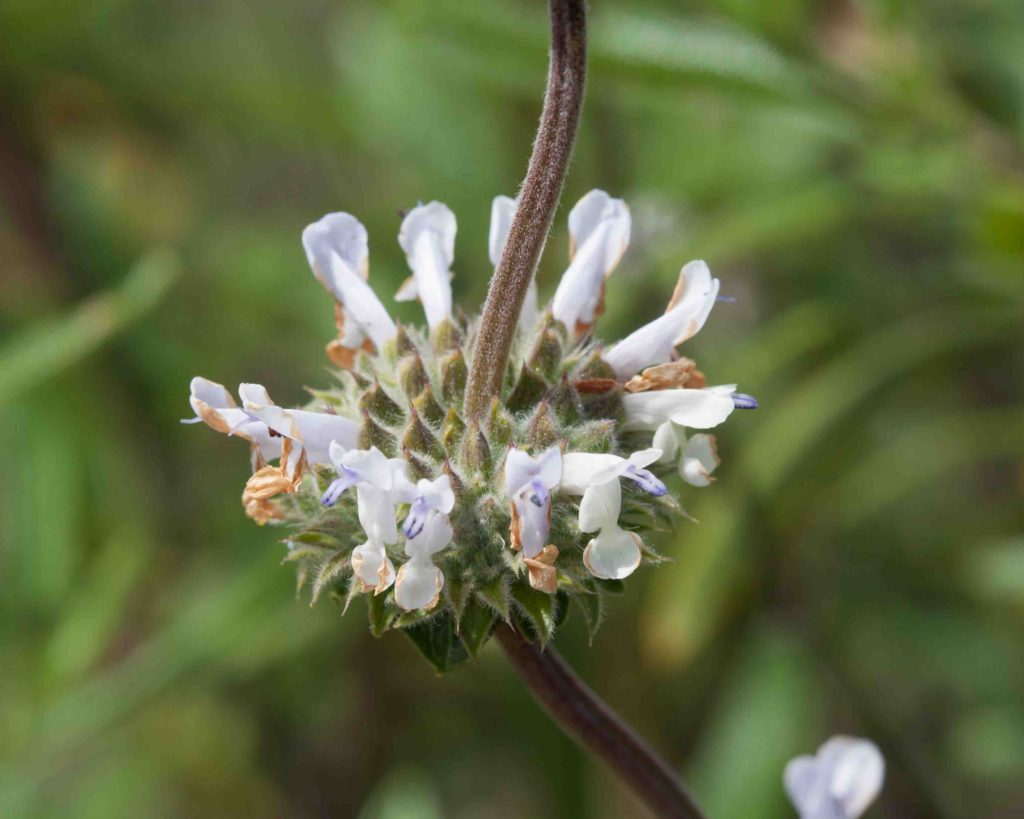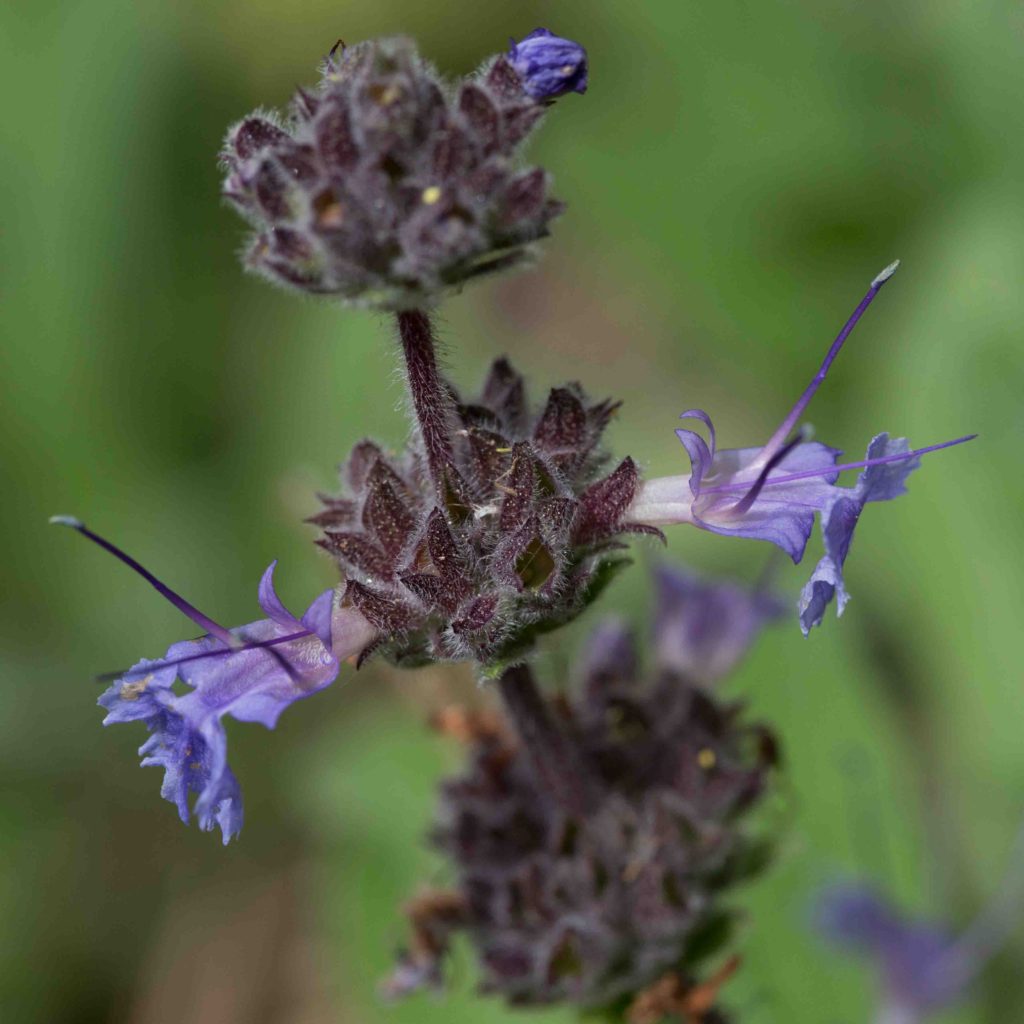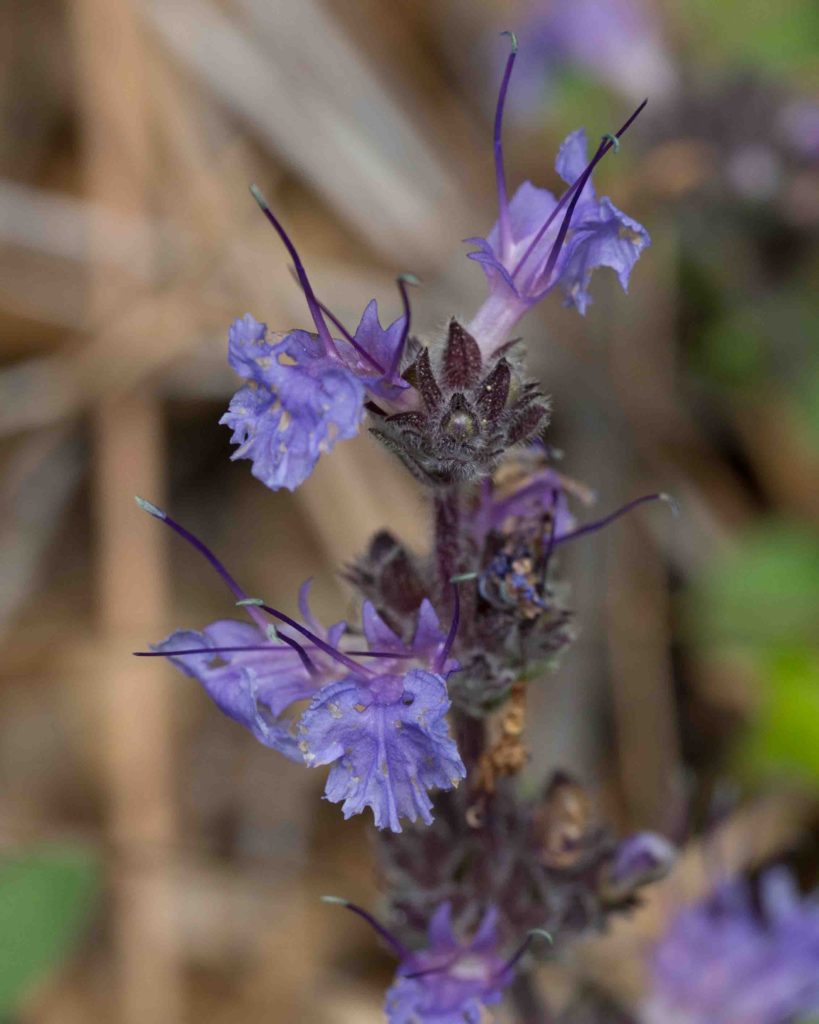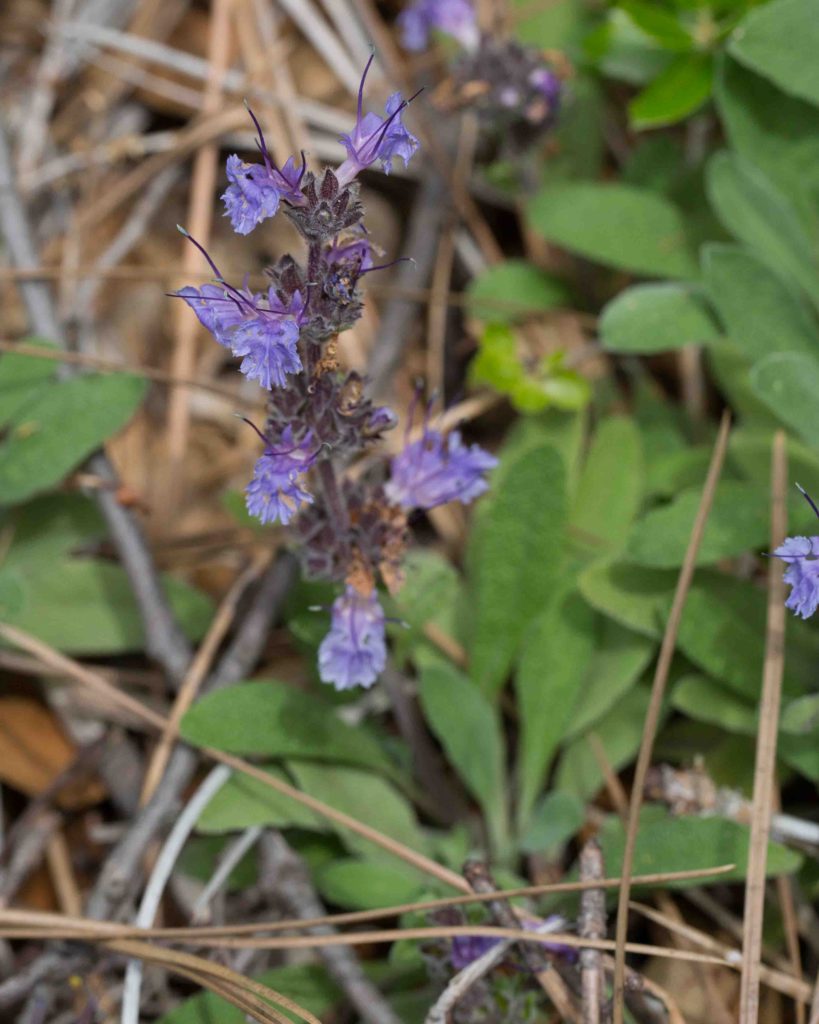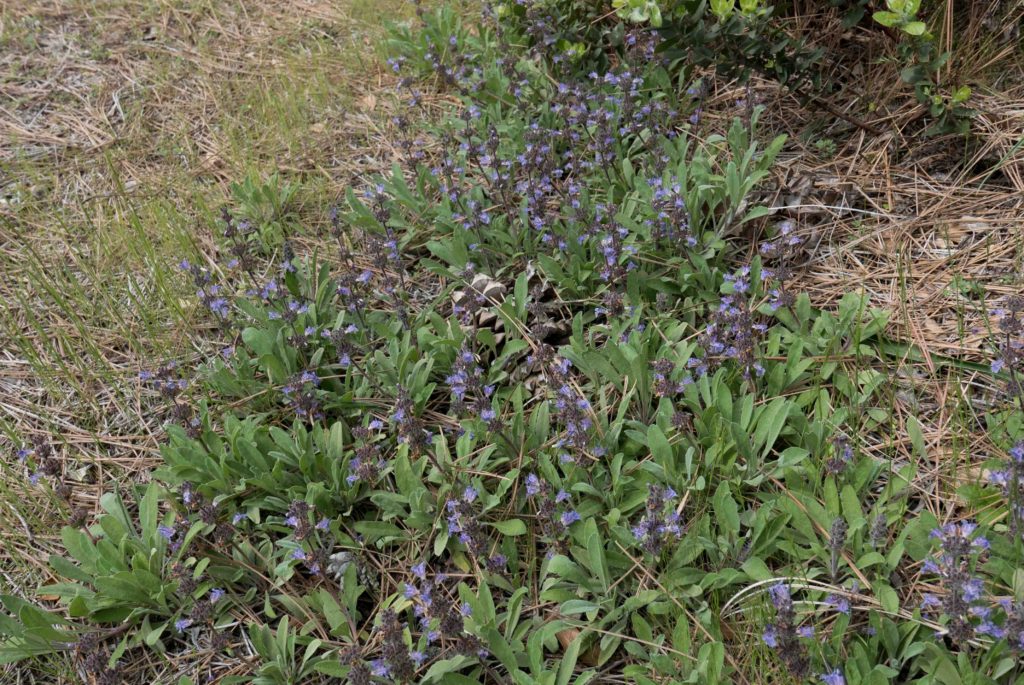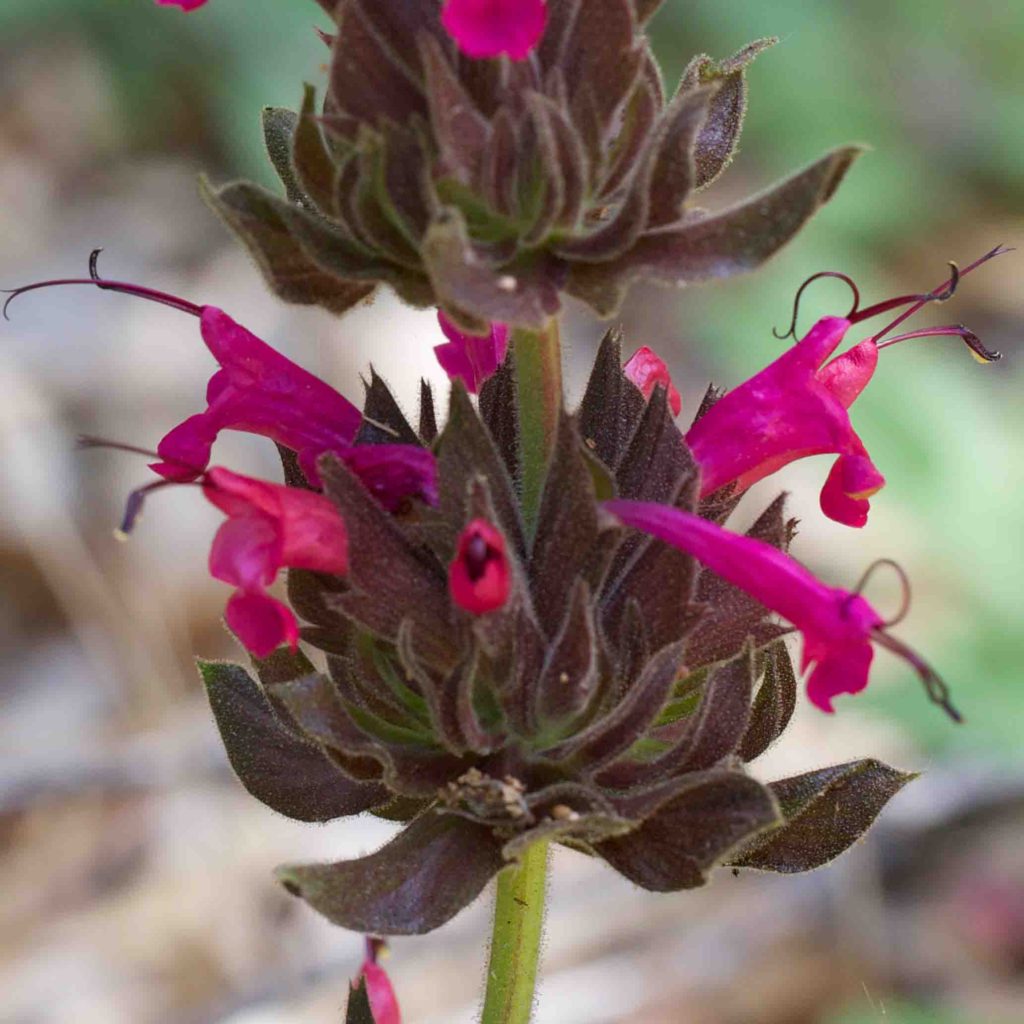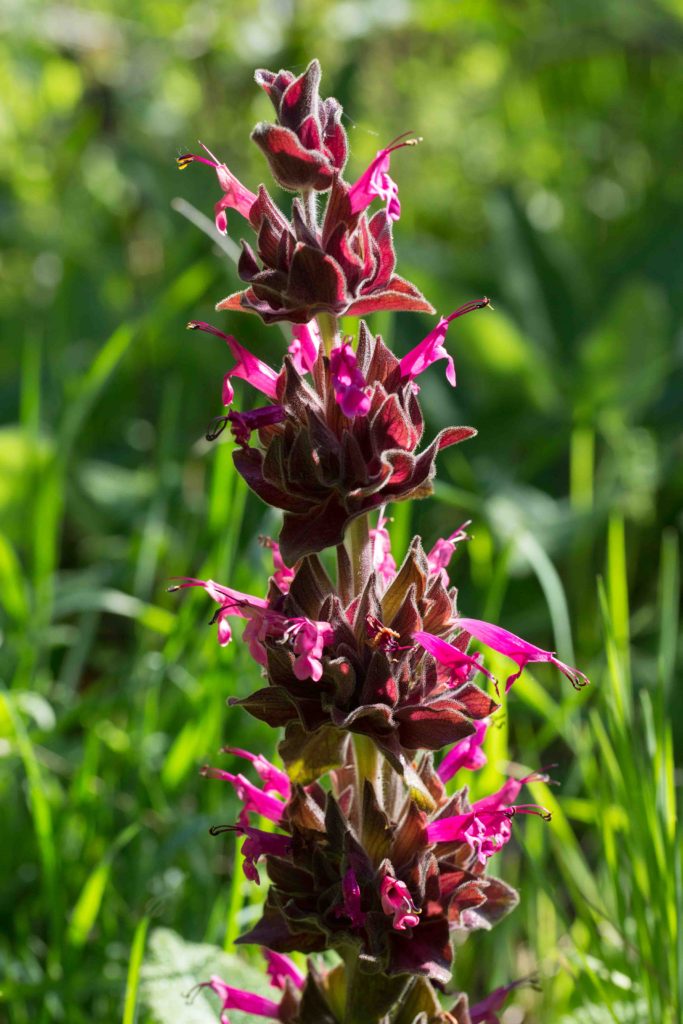Mint family members commonly have square stems, opposite leaves and a strong fragrance. This family includes not only the mints (Mentha) and sages (Salvia), but also many of the most common culinary herbs such as rosemary, marjoram and oregano.
Lamiaceae: Mint Family — Salvia and other “sages”
Pitcher Sage – Lepechinia calycina
Blooms:
Apr–June
Plant Height:
1–2 m
Flower Size:
Large
Origin:
Native
Habitat:
Chaparral
Notes:
The leaves of this largish shrub are similar to Black Sage (Salvia mellifera, see below). But the pendulous flowers are distinctive, generally pale lavender but sometimes white. Note how the four-lobed upper lip is rolled back, and the lower lip more extended. Very aromatic, like most true sages (genus Salvia).
Thistle Sage – Salvia carduacea
Blooms:
Mar–May
Plant Height:
10–100 cm
Flower Size:
Small cluster
Origin:
Native
Habitat:
Sandy & gravelly places, interior
Notes:
An uncommon sage, found in the interior in the southern parts of the county. This is aptly named for its thistle-like, white-woolly leaves, which are wavy-edged with short spines. Individual flowers are lavender, 25–35 mm with a fringed lower lip. Calyx lobes are woolly and spiny, like the leaves.
Chia – Salvia columbariae
Blooms:
Mar–June
Plant Height:
10–50 cm
Flower Size:
Small cluster
Origin:
Native
Habitat:
Dry, sandy & gravelly places
Notes:
Chia produces vivid blue flowers, in whorls on reddish-brown heads. It is often found in profusion. The coarse leaves are pinnately lobed, but not woolly or spiny. The seeds are prized for their nutritional qualities.
Black Sage – Salvia mellifera
Blooms:
Mar–June
Plant Height:
1–2.5 m
Flower Size:
Medium cluster
Origin:
Native
Habitat:
Scrub & chaparral
Notes:
A very common sage, this has obovate-elliptic to obovate leaves, which are highly aromatic. The white flowers, which quickly turn brown on the margins, are in whorled clusters, separated by 2–3 cm of stem. The common name derives from the dark appearance of the spent flower clusters, after they have set seed. Photos #2 and 4 by CJH.
Creeping Sage – Salvia sonomensis
Blooms:
Mar–June
Plant Height:
10–40 cm
Flower Size:
Small cluster
Origin:
Native
Habitat:
Dry slopes in chaparral and woodland
Notes:
This is a prostrate, mat-forming sub-shrub, with leafless flowering stems. Flowers are in 5–8 whorls, 1–1.5 cm across. The blue to violet flowers have a distinctive, fringed lower lip, that is at about twice as long as the upper. Leaves are 3–6 cm, puckered, elliptic to ovate and with minute teeth.
Crimson / California Hummingbird Sage – Salvia spathacea
Blooms:
Mar–May
Plant Height:
30–70 cm
Flower Size:
Medium cluster
Origin:
Native
Habitat:
Dry slopes in chaparral and woodland
Notes:
Unmistakable, this has purplish-red, tubular, 2-lipped flowers with long exserted stigma and stamens. The flowers are in 3–6 whorls, towards the top of the flower spike. Leaves are 10–20 cm, wrinkled, opposite, and arrow-shaped. The leaves have rounded teeth on the margins, and are woolly underneath. Bracts are oval, and the stem varies from green to purplish-bronze. Photo #4 by CJH.
